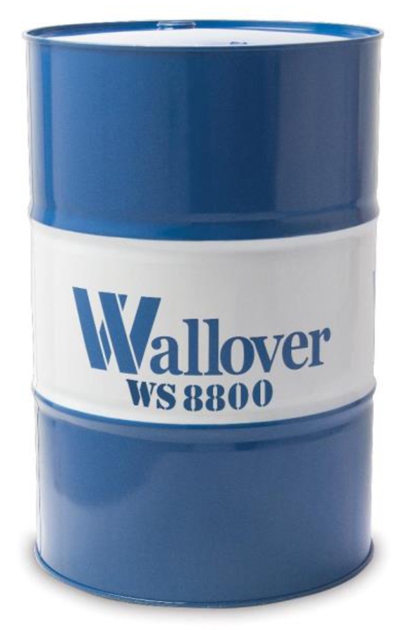
Wallover Oil Co. introduces WS 8800 machining coolant. WS 8800 is a high-performance, chlorine-free coolant for machining and grinding of ferrous and nonferrous metals including stainless steel, titanium, cast aluminum alloys and cast iron. It is particularly effective for machining all alloys of aluminum.
Clear, blue WS 8800 is formulated with an advanced bioresistant additive technology to provide a high level of performance in controlling bacteria and fungus to eliminate odors. Tooling costs are reduced due to the extreme pressure lubrication that extends tool life.
In addition, WS 8800 extends sump life and reduces waste disposal costs. This long-lasting fluid makes it ideal for both central systems and individual sumps. Its nonsticky formulation protects against fouling valves and switches.
The nonfoaming characteristics of WS 8800 make it ideal for high pressure CNC machining. It offers excellent rust and corrosion protection for the inner workings of the machine tool and rejects tramp oil for easy skimming.
Contact Details
Related Glossary Terms
- alloys
alloys
Substances having metallic properties and being composed of two or more chemical elements of which at least one is a metal.
- aluminum alloys
aluminum alloys
Aluminum containing specified quantities of alloying elements added to obtain the necessary mechanical and physical properties. Aluminum alloys are divided into two categories: wrought compositions and casting compositions. Some compositions may contain up to 10 alloying elements, but only one or two are the main alloying elements, such as copper, manganese, silicon, magnesium, zinc or tin.
- computer numerical control ( CNC)
computer numerical control ( CNC)
Microprocessor-based controller dedicated to a machine tool that permits the creation or modification of parts. Programmed numerical control activates the machine’s servos and spindle drives and controls the various machining operations. See DNC, direct numerical control; NC, numerical control.
- coolant
coolant
Fluid that reduces temperature buildup at the tool/workpiece interface during machining. Normally takes the form of a liquid such as soluble or chemical mixtures (semisynthetic, synthetic) but can be pressurized air or other gas. Because of water’s ability to absorb great quantities of heat, it is widely used as a coolant and vehicle for various cutting compounds, with the water-to-compound ratio varying with the machining task. See cutting fluid; semisynthetic cutting fluid; soluble-oil cutting fluid; synthetic cutting fluid.
- grinding
grinding
Machining operation in which material is removed from the workpiece by a powered abrasive wheel, stone, belt, paste, sheet, compound, slurry, etc. Takes various forms: surface grinding (creates flat and/or squared surfaces); cylindrical grinding (for external cylindrical and tapered shapes, fillets, undercuts, etc.); centerless grinding; chamfering; thread and form grinding; tool and cutter grinding; offhand grinding; lapping and polishing (grinding with extremely fine grits to create ultrasmooth surfaces); honing; and disc grinding.
- tramp oil
tramp oil
Oil that is present in a metalworking fluid mix that is not from the product concentrate. The usual sources are machine tool lubrication system leaks.
